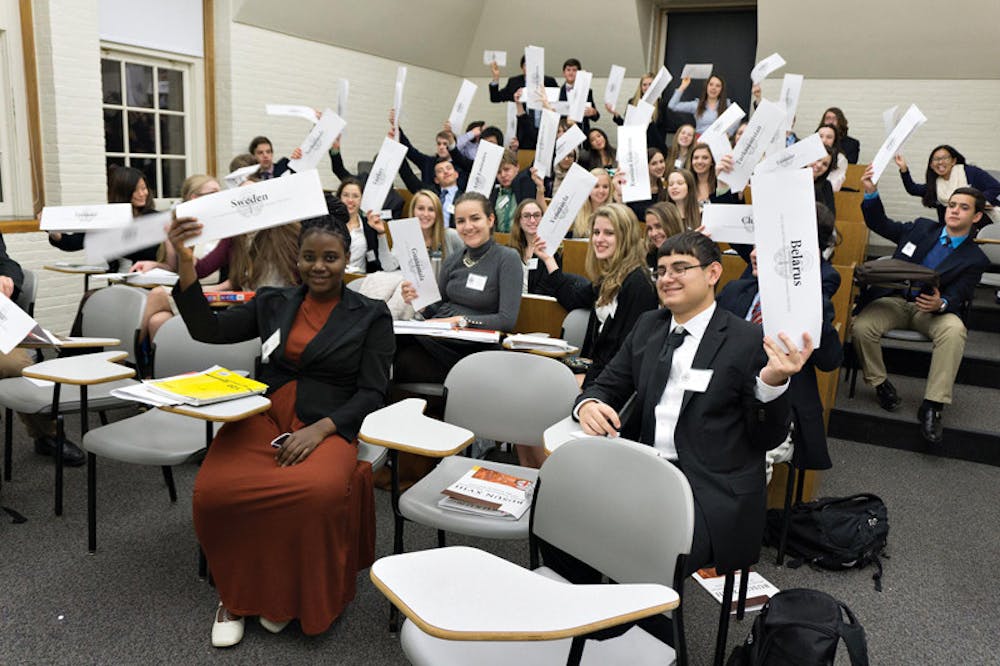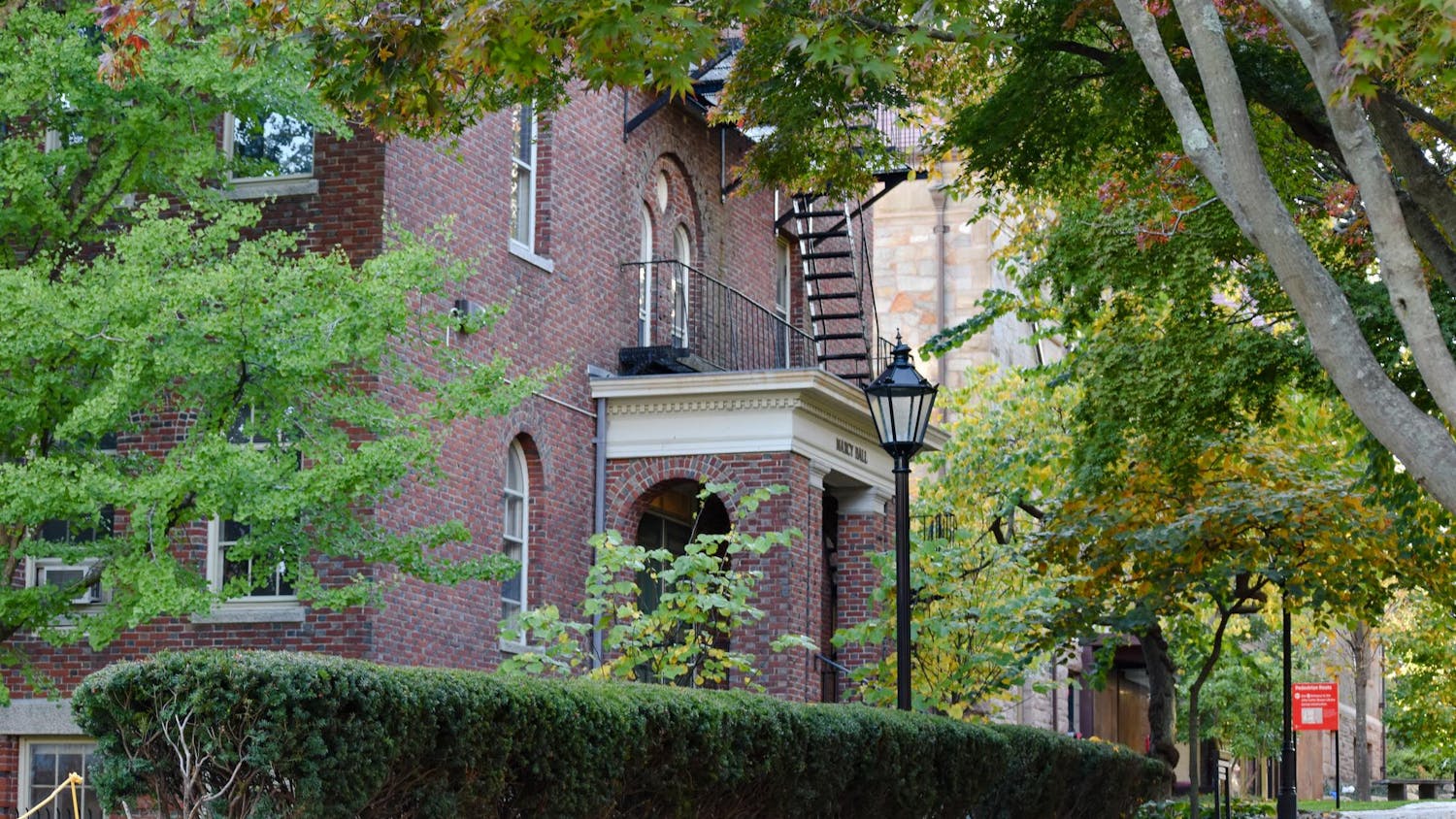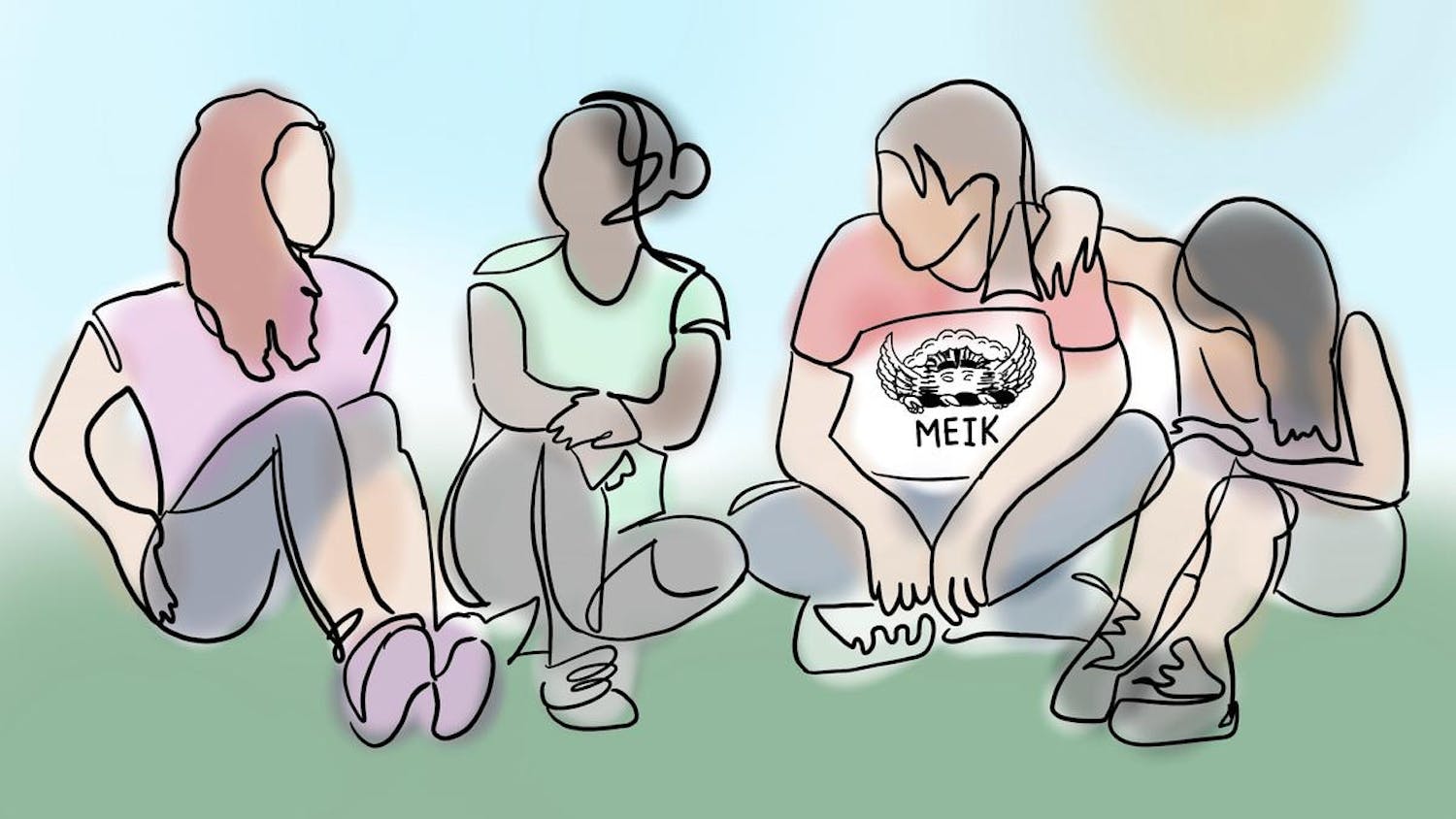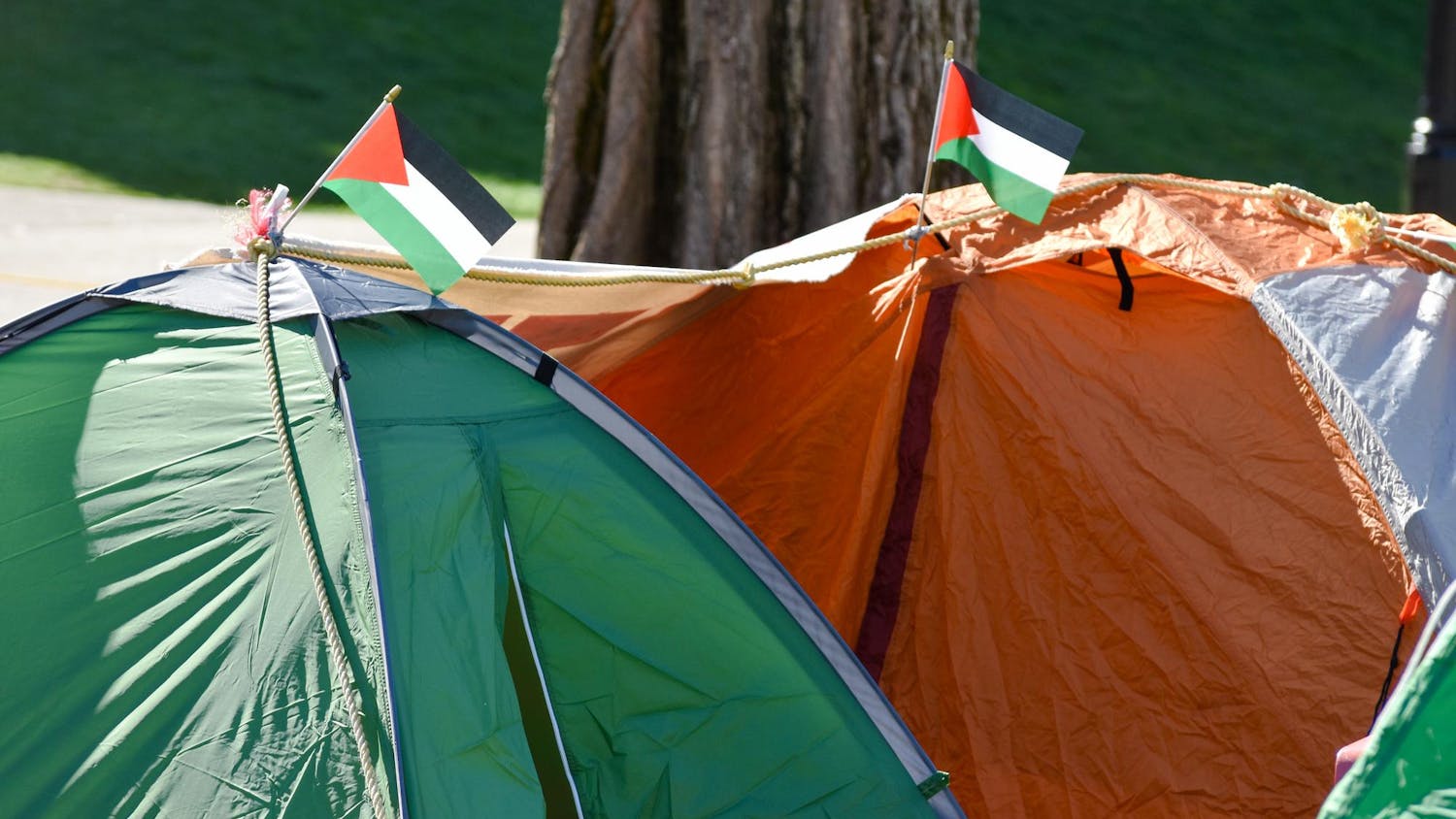Eight hundred forty-two suit-clad high school students congregated on College Hill this weekend, bumping up campus standards for attire and diplomatic discourse as they participated in the 18th annual Brown University Simulation of the United Nations.
The event, run by approximately 80 Brown students, drew delegates from about 50 high schools located as far away as Honduras and Japan, said Bernadette Stadler ’16, one of the conference’s secretaries general.
This year’s conference centered on the theme of the power of ideology. Stadler and Abi Kulshreshtha ’15, the other secretary general, chose the theme in the hopes of “challenging delegates to investigate the underlying reasons that political decisions are made and better understand political decisions that might not make sense,” Stadler said.
Along with the nine other students who made up the secretariat — BUSUN’s executive board — the secretaries general took the lead on handling last-minute mishaps, such as the absence of shuttles responsible for shepherding students from campus to hotels.
But for the most part, the conference went off without a hitch, several attendees said. A few attendees even said the conference ranked among the best Model United Nations events they had ever participated in.
The students who ran the event “were uniformly great,” said Joshua Abrams, adviser of the Model UN club at Meridian Academy, a private high school in Boston. “My kids kept saying this was the best Model UN they’d ever been to.”
Max Eliot, a sophomore at Meridian, also pointed to the small size of the committees as a standout element of the conference.
“The smaller the committee, the more interesting the position will be and the more fun the delegates will have,” Eliot said. “It promotes more interesting and more nuanced themes.”
“If you go to something at Harvard, there are 150 kids in one room,” Abrams said. But the BUSUN conference embodies “the beauty of smallness,” he added.
But the committees’ sizes posed challenges, too.
“Having to go from 300 students to 11 was incredibly difficult,” said Madi Litson, a sophomore at Meridian, adding that her committee was particularly fast-paced and that forced participants to adjust quickly.
The presence of passionate and highly trained committee chairs — roles filled by Brown students — facilitated the smaller committee sizes. “It gives delegates an opportunity to speak, and they have the freedom to be more collaborative,” said Steven Brownstone ’16, undersecretary general and director of general committees for BUSUN.
“In larger groups, the only way to get noticed is to be more cutthroat,” Brownstone said. “A lot of it comes down to training our chairs in these values — making sure that everyone gets to speak and rewarding collaboration. We always tell our chairs to let their knowledge show.”
A new aspect of this year’s conference was the outreach component, as BUSUN leaders worked with students from local public schools to prepare them for participation in the conference.
Conference organizers realize that the event “is very heavily populated by private schools, and even public schools who have the money to travel to Providence and stay in a hotel, rather than public schools who might have delegates that are just as good and might not have the resources,” Kulshreshtha said.
The group worked with the Providence After School Alliance and organized a class for students from local public schools in which they learned techniques that would be useful during the committee debates.
As a result of these classes, the local students “were even outshining more experienced delegates from other schools,” Kulshreshtha said. “So that’s something we hope to continue, because we do recognize that there is an aspect of privilege.”
The conference doubles as both an opportunity to discuss international affairs and an introduction to Brown for prospective students, Stadler said. As a result, conference coordinators aimed to offer delegates an experience embodying the Brown community’s qualities.
“One of the things that’s really special about Brown is we have this collaborative environment,” Stadler said, adding that BUSUN tries to manifest this characteristic by arranging “small, intimate committees where everyone can speak multiple times in one committee session.”
“At other conferences, it can feel like delegates are just very interested in getting awards,” said Brian Johnson, a junior at the Bromfield School in Harvard, Massachusetts. But the atmosphere at BUSUN “felt more like a group collaboration.”
Elliot Weiss ’17, chair of the Aboriginal Civil Rights Action Committee, said the constructive dynamic in his group surpassed any he had previously seen, even as a former high school Model UN participant. “Something that’s been common in my experiences is that some committees will have delegates who don’t really care. They just kind of sit there and look bored,” he said. “In my committee, every single delegate contributed and was passionate about the issues — 21 out of 21 contributed, something I’ve never experienced.”
Outside of committee negotiations, delegates had the opportunity to get a taste of Brown by attending talks given by faculty members affiliated with the University’s international relations program.
While delegates only spent about 48 hours in Providence, BUSUN coordinators started planning for their arrival a year ago, Stadler said. Looking ahead, BUSUN members will kick off planning for next year’s conference before the end of November, she added.

ADVERTISEMENT




